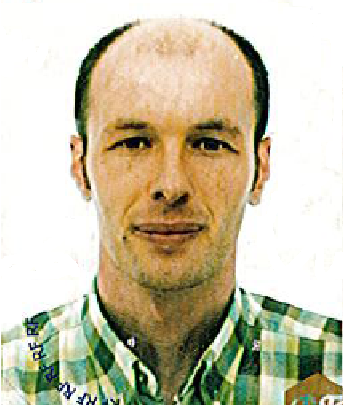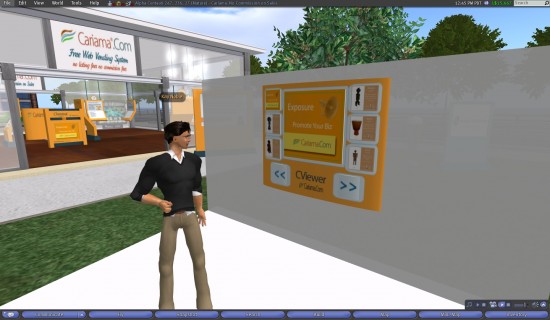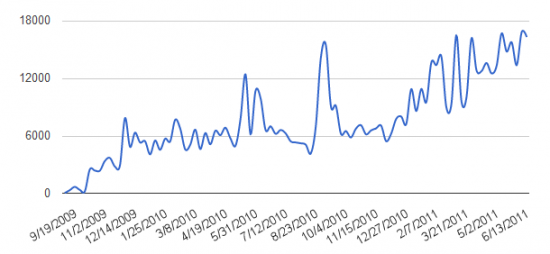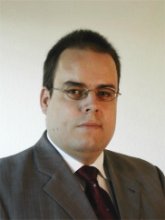Paris-based Cariama, a multi-grid marketplace, wants merchants to know that they can sell their goods to six different OpenSim grids, plus Second Life — without paying any commission. Those six grids are 3rd Rock Grid, Avination, InWorldz, Open Neuland, Â Sim World and UFS Grid.
It’s been making that pitch since the fall of 2009, but, so far, the marketplace has seen a grand total of just 175 transactions and has only 429 registered users.

Part of it is a marketing problem, admits founder and CEO Stephane Kieger. Another problem is the marketplace currently lists only 6,059 products.
“People come and don’t find what they want,” he said.
By comparison, the Second Life marketplace has more than 1.5 million products.
Another problem might be the exchange fees. Grids that don’t have their own currencies, have to use Cariama’s own currency, the C$ (no relation to Avination’s C$, which is also accepted by Cariama).
But converting Cariama’s C$ to Linden dollars requires paying a 10 percent commission.
However, if, say, a buyer loads up his Cariama account with his 3rd Rock Grid GO$, makes an online purchase with those GO$, and the vendor withdraws those GO$ into her own 3rd Rock Grid avatar, there is no fee or commission on that transaction. Merchants can specify what currencies they accept for their goods.
There is no way to buy currency directly from Cariama on their website — users need to connect a Second Life or other avatar and transfer money into their account, then convert it to the currency they will be shopping in. Online currency purchases might be an option in the future, Kieger said.
Kieger declined to say how much Cariama is making, but did say that revenues are evenly split between currency conversion commissions and Website advertising.

If another grid wants to have the Cariama exchange, Kieger said, they should contact him at kay@cariama.com (he goes by Kay Noble in-world).
“Then I enter the grid, and do an audit,” he said. “IÂ see what is needed in terms of scripting, what are the limitations of the grid. Some grids are more advanced than others.”
He recommends that grid managers run OpenSim version 0.7.2 or later.
To get a new grid up and running with Cariama takes a couple of days — usually, over the course of a weekend. Unlike with HGExchange, no modules are required to be installed by region owners or grid managers. (See full story about the HGExchange here.)
“I just have to put in my scripts, and do some debugging to see that it works,” said Kieger.
There is a script for the Cariama terminal, another script for the vending machine, and a third script for the vending box. None of the transaction data is stored locally, however.
“Everything is on my own servers,” he said.
On InWorldz and Second Life, items bought online can be delivered directly to avatar inventories, even if the avatar is no online.
With the 3rdRockGrid, Open Neuland,  SimWorld and UFS Grid the avatar needs to be present in the same region as the vending box.
Avination does not allow any Web-based purchases.
“The founders do not want to have a marketplace where you can buy outside the world,” Kieger said.
In grids that don’t have their own currencies, the Cariama system does not use standard OpenSim shopping scripts. In those grids, when a buyer touches a vendor in-world, the entire transaction takes place on Cariama’s servers, using the money that the user has added to their Cariama account.
By comparison, the OMC payment system — currently in use on 29 grids — uses all standard purchase scripts. However, the OMC system, like HGExchange, requires a module to be installed by the grid managers, hosting company, or region owner.
Kieger said he has no plans to support the OMC currency.
“I have my own system,” he said.
Kieger said that Cariama does not track purchase volumes or historic trends, except for the number of Website page views. These have been trending up since September 2009.

Open Neuland hedges its bets

Kai Ludwig, owner of German OpenSim hosting company TalentRaspel virtual worlds Ltd. and manager of the Wilder Westen and OpenNeuland grids, will be rolling out support for both marketplaces.
Earlier this month, he told Hypergrid Business that he would not use any marketplace that didn’t support OMC, which his grids currently use.
“I changed my mind and decided to use some of the upcoming marketplaces, even if they don’t support OMC at all,” he said. “It is better to be first in line than to wait for things that may never happen. OMC is a great currency, but marketplaces will tend to not support it, because they want to push their own currency.”
Instead, HGExchange currently uses MyOpenGrid’s M$ currency, and Cariama their C$.
“We decided to integrate them with our grids anyway, because we want to provide our customers with the best of the available technologies,” he said.
That’s why TalentRaspel has licensed the RCI grid management software from PioneerX Estates, he added, and why he went with the OMC in the first place.
“This way we add value to our region and grid offerings without having to make additional investments,” he said. “The savings enable us concentrate on our core business and to give our customers a better experience.”
The two marketplaces can coexist together with the OMC.
For example, the OMC currency can be used by in-grid merchants, and allows Ludwig’s grids to have a currency that is “backed by a company — Virwox — with long time currency experience that is trustworthy by its long existence on the currency exchange market,” he said.
“I think that one should participate in all [marketplaces] that grow to a certain level of professionality and let the customers decide which one they use,” Ludwig added.
- Kitely Mega Worlds on sale for $90 per month - July 19, 2024
- OpenSim regions up, actives down with summer heat - July 15, 2024
- People think AIs are conscious. What could this mean for bots in OpenSim? - July 12, 2024
